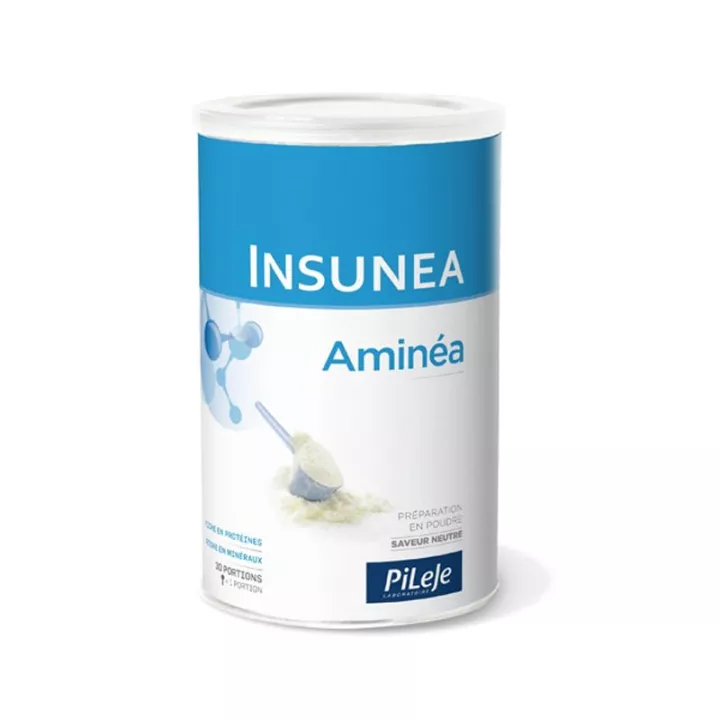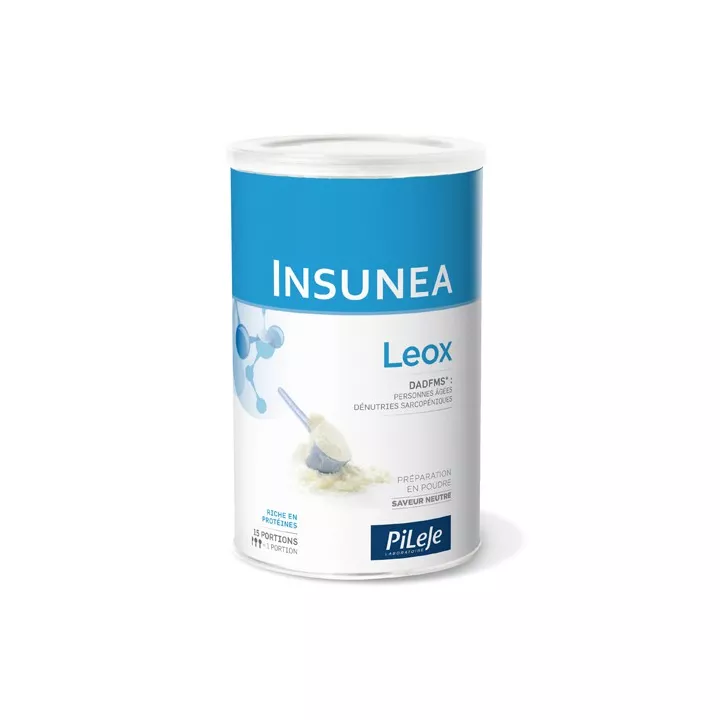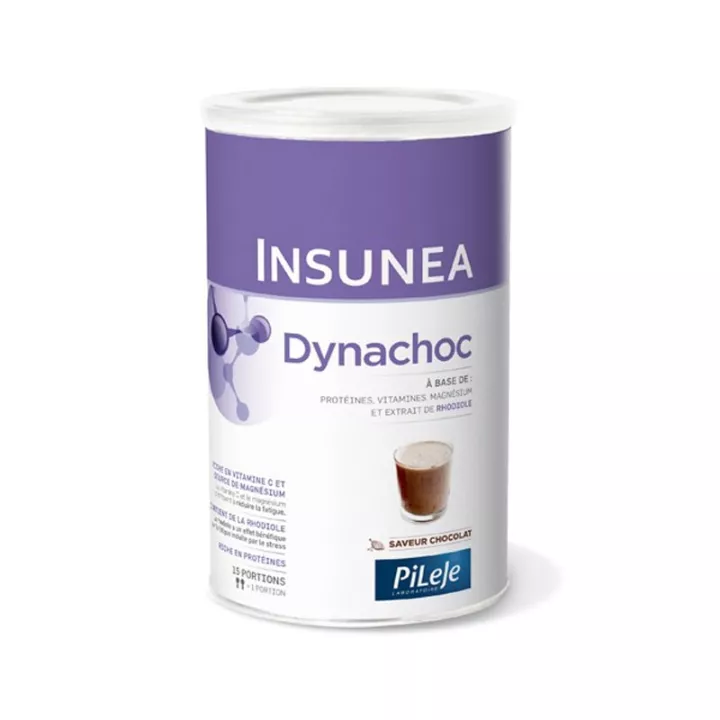What is Insunea Aminéa Caséine Pure by Pileje used for?
Casein is a slow protein, which takes several hours to assimilate. It will therefore release amino acids throughout this period. This property makes casein an anti-catabolic protein, as it supplies the body with amino acids over a long period, helping to preserve muscle fibers.
Rich in protein. Proteins help to build and maintain muscle mass, as well as normal bone structure.
What is casein used for?
Casein is a high-biological-value protein frequently used in dietary supplements for athletes and those seeking to improve their overall nutrition. It is mainly extracted from milk and represents around 80% of the protein contained in the latter. This protein is characterized by slow digestion, enabling a gradual release ofamino acids into the bloodstream, providing continuous muscle nourishment over a long period.
One of the main benefits of casein is its ability to promote muscle growth and prevent muscle catabolism, which is essential for people engaged in fitness or bodybuilding programs. It is often consumed before bedtime to support muscle recovery during sleep, when the body repairs and regenerates itself.
Casein is also effective in helping to control weight, as it increases the sensation of satiety. This can reduce overall calorie intake, which is beneficial for individuals following a weight-loss diet. Its ability to form a gel in the stomach slows digestion, prolonging the feeling of fullness.
Casein is also rich in calcium, an essential mineral for bone health. Regular consumption can contribute to better bone density, which is crucial in preventing conditions such as osteoporosis, particularly in post-menopausal women and the elderly.
What's the difference between whey and casein?
The main difference between whey and casein lies in the rate at which they are digested and absorbed by the body:
- Whey: Often referred to as a "fast" protein because of its rapid digestion and absorption. Whey stimulates a rapid increase in amino acid levels in the blood, which in turn promotes a surge in muscle protein synthesis. This makes it ideal for post-workout consumption, when the body needs protein quickly to begin the process of muscle repair and growth.
- Casein: In contrast, casein is a "slow" protein. It forms a gel in the stomach which slows down digestion, resulting in a gradual and sustained release of amino acids into the bloodstream. This prolonged digestion profile can help prevent muscle breakdown over extended periods, such as between meals or during sleep.
We also offer NHCO Aminoscience Creatine RBx B-Alanine & HMB 120 Capsules, at the best price in our online pharmacy.
How should casein be taken?
AMINEA can be mixed with a variety of foods: soup, purée, drink (hot or cold), dessert, compote, or whatever else takes your fancy! In a large bowl, pour 1 measuring spoonful of AMINEA Neutral Flavor and add the food of your choice, mixing with a whisk. *Adjust the amount according to the desired texture. We advise you to follow these instructions for best results. To prepare purées, gratins, creams or any other recipe based on milk, soya milk, almond milk or other milk substitutes, add 2 to 3 measuring spoons to 500 ml.
Recommended use: Consume 2 to 4 portions a day (2 to 4 measuring spoons) with meals or as a snack.
Give your opinion on the recommendations for use and dosage of INSUNEA Aminéa Caséine pure Pot 300G PiLeJe with our partner Verified opinions after your purchase.
What is the composition of this long-digested protein?
Milk protein (pure casein), oligofructose (soluble chicory fiber), soy protein, emulsifier (soy lecithin), anti-caking agent (colloidal silica). May contain traces of egg, gluten and nuts.
Casein is the main protein in milk. It is a slow-digesting, anti-catabolic protein, very rich in glutamine. It has a biological value of 77.
Neutral-flavored powder preparation
Net weight: 300 g
Energy value
|
Per 100 g
|
Per portion (10 g)
|
| |
|
|
%VNR * |
|
%VNR * |
%AET ** |
| Energy value |
(kJ) |
1532 |
|
153 |
|
|
| Energy value |
(kcal) |
362 |
|
36 |
|
|
| Fat content |
(g) |
1 |
|
0,1 |
|
2% |
| - of which saturated fatty acids |
(g) |
0,48 |
|
0,05 |
|
|
| Carbohydrates |
(g) |
3,5 |
|
0,4 |
|
4% |
| - of which sugars |
(g) |
1,4 |
|
0,1 |
|
|
| Dietary fiber |
(g) |
9,9 |
|
1 |
|
|
| Protein |
(g) |
79,8 |
|
8 |
|
88% |
| Salt |
(g) |
0,37 |
|
0,04 |
|
|
| Potassium |
(mg) |
105 |
|
11 |
|
|
| Calcium |
(mg) |
982 |
123% |
98 |
|
|
| Phosphorus |
(mg) |
587 |
84% |
59 |
* %NRV: Reference Nutritional Values** %TEA: Total Energy IntakeThe analytical values given are based on the information currently available to us. Please refer to packaging.
Presentation
Packaging : 300 g jar
10 g = 1 portion
Our advice and that of pharmacy experts
Casein is very rich in glutamine. Glutamine is an anti-catabolic amino acid, accounting for 10-15% of casein protein.
The amino acid profile of casein is average, with a biological value of 77, well behind egg protein (88) and whey (110-130).










